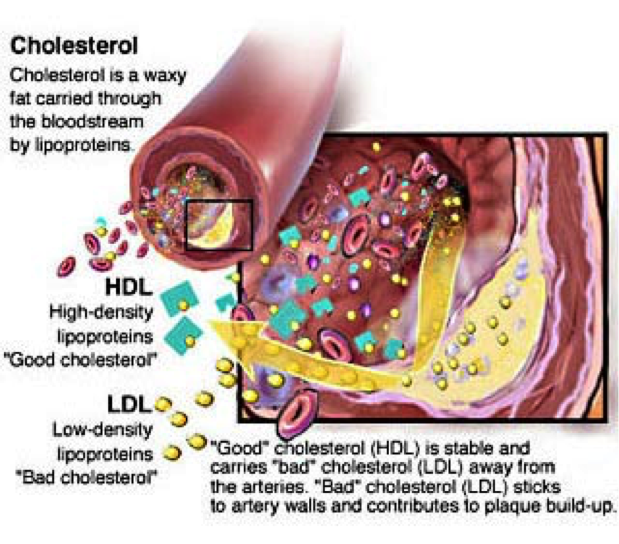Showing food fact sheet for lamb
Lean and Delicious Lamb: Don't Forget It!
 |
When compared to beef or chicken, lamb can hardly be described as a popular choice in the North American diet. Interestingly, Americans consume sixty-one pounds of beef for every pound of lamb they eat! This is a lost opportunity, because lamb not only tastes delicious, but is also rich in nutrients that are an essential part of a healthy diet. From monounsaturated fasts that may reduce your risk of heart disease by lowering LDL (low-density lipoprotein) [1], to vitamin B12, which is required for nerve health and red blood cell synthesis, and to make DNA [2], lamb is the very definition of delicious and nutritious!
For Your Heart Health
 |
The double bond is on the ninth carbon of the molecule. |
 |
(Image: http://3dhealthcare.org/heartcholesterol.html) |
First of all, the substitution of 5% of your energy intake in the form of saturated fats to monounsaturated fats like linoleic acid has been shown to reduce the risk of coronary heart disease by 20-40%! This is because increasing your intake of these special fats actually decreases the concentration of potentially harmful fats called low-density lipoproteins in your body. Low-density lipoproteins (or LDL) are sometimes referred to as "bad cholesterol” due to their ability to transfer fat into the walls of your arteries and therefore increase your chances of atherosclerosis. It should be mentioned for the sake of accuracy that LDL is actually very different from cholesterol [3]. The schematic below illustrates the different forms of lipoproteins and their function in the body.
Additionally, a diet higher in monounsaturated fats and lower in saturated fats has been shown to reduce the risk factors associated with thrombogenesis and even insulin resistance [4]. So what is it about linoleic acid and other monounsaturated fats that make them so special? To put it simply, due to their double bond, they remain soluble (liquid) at temperatures where other fats would solidify. Conversely, a saturated fat, or a fatty acid with no double bonds, will turn solid and tend to build up in the body, increasing the likelihood of cardiovascular illness. These types of fatty acids can be found more prevalently in animal products like cream, cheese, and butter. Thankfully, lamb has you covered, with a lower concentration of these potentially harmful fatty acids than popular meet choices like beef! [5]
Lamb for Vitamin B12!
 |
(Image: http://www.thealevelbiologist.co.uk/ haemoglobin/haemoglobin.jpg) |
Consider Grass-Fed Lamb for a Leaner Experience!
If you are looking for a leaner and even more healthy lamb experience, then look no further than grass-fed lamb. Studies have shown that grass-fed lamb meat is significantly higher in omega-3 fatty acids AND conjugated linoleic acids (a whopping three-fold increase!) when compared to grain-fed meat [8].
References
- Vannice G, et al. Position of the Academy of Nutrition and Dietetics: Dietary fatty acids for healthy adults. Journal of the Academy of Nutrition and Dietetics. 2014;114:136.
- DrugBank Cyanocobalamin
- P.M. Kris-Etherton Monounsaturated fatty acids and risk of cardiovascular disease. Circulation, 100 (1999), pp. 1253–1258.
- B. Vessby, M. Unsitupa, K. Hermansen, G. Riccardi, A.A. Rivellese, L.C. Tapsell, et al. Substituting dietary saturated for monounsaturated fat impairs insulin sensitivity in healthy men and women: the KANWU Study. Diabetologia, 44 (2001), pp. 312–319.
- 9 grams of saturated fat for lamb versus 11 grams for beef according to the USDA.
- "Anemia - B12 deficiency: MedlinePlus Medical Encyclopedia" 24 (1). Retrieved 2013-12-29.
- Food and Nutrition Board, Institute of Medicine. Dietary reference intakes for thiamin, riboflavin, niacin, vitamin B6, folate, vitamin B12, pantothenic acid, biotin, and choline. Washington, DC: National Academy Press; 1998;58-86.
- M. A. Valvo, Lanza M., Bella M., Fasone V., Scerra M., Biondi L., Priolo A. Effect of ewe feeding system (grass v. concentrate) on intramuscular fatty acids of lambs raised exclusively on maternal milk. 2005. Animal Science. 81. pp 431.